Are you ready to transform your house into a cutting-edge sanctuary of convenience and security? Today, we’re diving into the ultimate guide on building a smart home.
Imagine a home where you can control the lights, security, and even the temperature with a simple voice command or tap on your phone. It’s not science fiction; it’s the future of home living, and it’s available to you right now.
In this comprehensive guide, we’ll cover everything from the basics of a smart home to the essential devices you’ll need to get started. You’ll learn how automation and control systems work, and we’ll recommend some budget-friendly options for beginners.
We’ll also touch on important considerations like privacy, security, and the future of smart homes. Did you know that a smart home makes your life more convenient while also saving you money on energy bills and improving your home’s security?
Whether you’re a tech enthusiast, a homeowner looking to upgrade, or someone who simply wants to make their life easier, this is tailor-made for you.
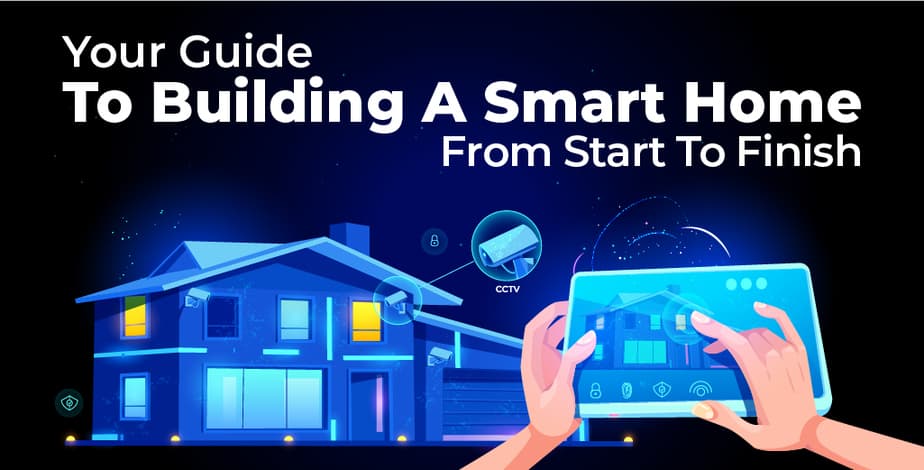
Key Takeaways of Building a Smart Home Guide
- A smart home leverages interconnected devices to automate and streamline various aspects of daily life, from lighting to security.
- Smart homes offer convenience, security, customization, energy efficiency, and more.
- Automation and control are the building blocks of a smart home, with options like voice commands, mobile apps, and central hubs.
- Essential smart devices include those for security, lighting, energy management, and appliances.
- Smart security offers real-time alerts, remote monitoring, and customizable settings for enhanced safety.
- Smart lighting allows for convenience, security, mood customization, and energy savings.
- Smart energy management optimizes heating, cooling, and overall energy usage, leading to cost savings and reduced carbon footprint.
The Basics of a Smart Home
Before we dive into the exciting world of smart home technology, let’s start with the basics. In this section, we’ll explore the fundamental elements that make up a smart home and how they work together to create a seamless and convenient living experience.
What is a Smart Home?
What exactly is a smart home? At its core, a smart home uses internet-connected devices to automate and control various aspects of daily life, from lighting and temperature to security and entertainment.
A smart home is not just a trend; it’s a lifestyle upgrade that can make your daily routines more convenient, secure, and energy-efficient.
Here are some key principles that define a smart home:
- Connectivity: Devices in a smart home communicate with each other and with you through the internet, enabling seamless control and monitoring from anywhere.
- Automation: Tasks that used to require manual intervention can now be automated, saving you time and effort. For example, your lights can turn on as you enter a room, or your coffee maker can start brewing when your alarm goes off.
- Integration: Smart home devices are designed to work together, creating a cohesive ecosystem. This means your smart thermostat can talk to your smart blinds, optimizing both comfort and energy efficiency.
- Customization: A smart home is as unique as its owner. You can tailor your automation to fit your lifestyle, from setting up personalized lighting scenes for different moods to creating custom schedules for your devices.
- Security and Privacy: As with any connected technology, security and privacy are paramount. Manufacturers employ robust encryption and authentication protocols to safeguard your data and devices.
- Energy Efficiency: Smart homes can help you reduce your carbon footprint and save on energy bills. For instance, you can program your thermostat to adjust based on occupancy or integrate your lighting with natural daylight.
In my experience, the best way to get started with a smart home is to identify your needs and prioritize them. Whether it’s enhancing security, improving convenience, or saving energy, there’s a smart solution for almost every aspect of your home.
The beauty of a smart home is its versatility; you can start small with a single device and gradually expand as you see fit.
What are the Benefits of a Smart Home
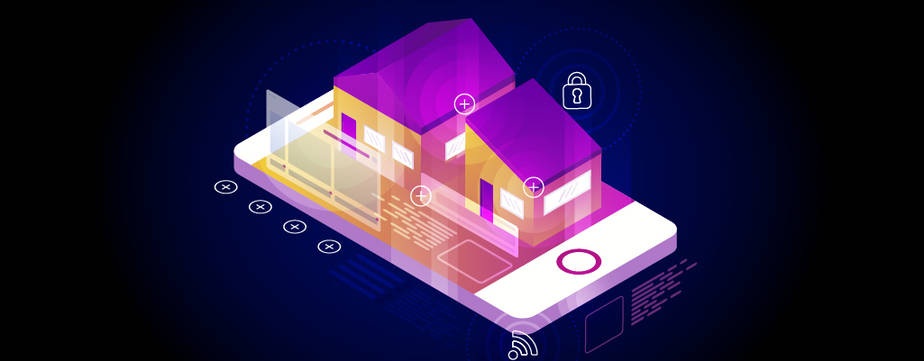
Smart homes aren’t just about the latest gadgets; they’re about improving your life. Here’s why you should seriously consider making your home smarter:
- Personalized Convenience That Adapts to You
- Imagine walking into a perfectly lit, warm home, with your favorite playlist softly playing in the background. With smart home automation, you can set up personalized scenes that cater to your every mood and routine.
- Energy Savings That Don’t Compromise Comfort
- Smart thermostats, like the Google Nest Learning Thermostat, learn your temperature preferences and adjust accordingly. This can lead to significant energy savings without sacrificing comfort.
- Enhanced Security for Peace of Mind
- From smart locks and doorbell cameras to motion sensors and security systems, smart homes offer a new level of security. Receive real-time alerts and monitor your home from anywhere, giving you peace of mind whether you’re at work or on vacation.
- Future-Proofing Your Home
- As your needs change, so can your smart home. Whether it’s adding voice control or integrating new devices, a smart home is flexible and can evolve with you.
- Improved Efficiency in Daily Tasks
- Automate repetitive tasks like turning off lights or watering the garden, freeing up time for the things that matter most to you.
- Health and Wellness Benefits
- Smart home technology can monitor air quality, adjust lighting for optimal sleep, and even remind you to take breaks from your desk.
Making your home smarter is a lifestyle upgrade that offers convenience, energy savings, and added security. By starting small and gradually expanding your smart home ecosystem, you’ll unlock a world of benefits that adapt to your unique needs and preferences.
Smart Home Automation and Control
Automation is the secret sauce that makes a smart home truly smart. It’s the art of orchestrating your devices and systems to work together seamlessly, so you can sit back and let your home take care of things.
Here are the options for how you can control your smart home:
- Voice Commands:
- Use voice assistants like Amazon Alexa or Google Assistant to control your devices with a simple spoken command. It’s like having your own personal butler, but without the fancy uniform.
- Mobile Apps:
- Most smart devices come with their own mobile apps, allowing you to control them from anywhere in the world. Forgot to turn off the lights? No worries, just whip out your phone and tap a button.
- Central Smart Home Hubs:
- These are like the conductor of your smart home orchestra. Smart home hubs, such as Samsung SmartThings or Apple HomeKit, bring all your devices together under one roof, so to speak. You can create scenes, automate routines, and control multiple devices with a single command.
Why is this important? Well, imagine this: You’re on vacation and suddenly remember you left the front door unlocked. Instead of panicking, you can simply open your smart home app and lock it with a tap. Automation and control give you peace of mind and make your life more convenient.
I’ve seen homeowners go all-in on voice commands, while others prefer the flexibility of mobile apps. The key is to find what works best for you and your lifestyle.
So, whether you’re a tech enthusiast or just someone looking to simplify their daily routine, automation and control are the building blocks of a smart home that truly works for you.
What are the Essential Smart Devices of a Smart Home
Let’s now turn our attention to the building blocks of a smart home: the essential smart devices. These are the gadgets that form the backbone of your connected ecosystem, enabling you to control and automate various aspects of your home life.
Whether it’s lighting, security, entertainment, or even your morning coffee, these devices are the key to unlocking the full potential of your smart home.
So, what are these crucial devices that you absolutely need to get started on your smart home journey? Let’s dive in and find out.
1. Smart Security Devices
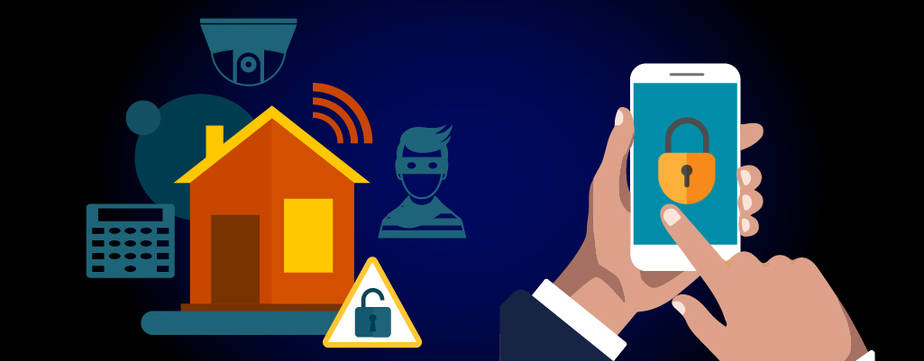
Smart security is the modern-day guardian of your home, using cutting-edge technology to keep you safe and sound. It’s not just about locking doors and windows; it’s a comprehensive system that encompasses everything from surveillance cameras to alarm systems.
Components of Smart Security
- Smart Locks: Replace traditional locks with keyless entry, granting access via a smartphone or keypad.
- Surveillance Cameras: High-definition cameras that offer live feeds and recording capabilities. There are indoor cameras and outdoor cameras for ultimate security.
- Alarm Systems: Detects and alerts you to any potential threats, often with customizable settings.
- Sensors: Window and door sensors that send real-time alerts when breached.
- Voice Assistants: Can integrate with your security system, allowing you to arm or disarm with a simple voice command.
Many Benefits of Smart Security Devices
- Real-Time Alerts: Get instant notifications on your phone when someone approaches or enters your property.
- Remote Monitoring: Check in on your home from anywhere in the world using your smartphone.
- Customizable Settings: Tailor your security system to your needs, whether you’re at home or away.
- Deterrent Effect: Visible cameras and smart locks can deter potential intruders.
Trends to Watch
- Biometric Systems: Fingerprint or facial recognition for foolproof access control.
- AI Integration: Smart security that learns your patterns and can differentiate between normal and suspicious activity.
Usage Tips for Optimal Safety and Convenience
- Do your research: Read reviews, compare features, and choose a system that suits your needs.
- Professional installation: For more complex systems, professional installation ensures everything is set up correctly.
- Regular maintenance: Keep your security system in top shape by replacing batteries and updating firmware.
Smart security is the bedrock of a well-rounded smart home automation system. It’s about more than just peace of mind; it’s about having control and awareness over your home’s safety, all with a few taps on your smartphone. So, lock it down, keep an eye out, and embrace the future of home security.
2. Smart Lighting Devices and Light Bulbs
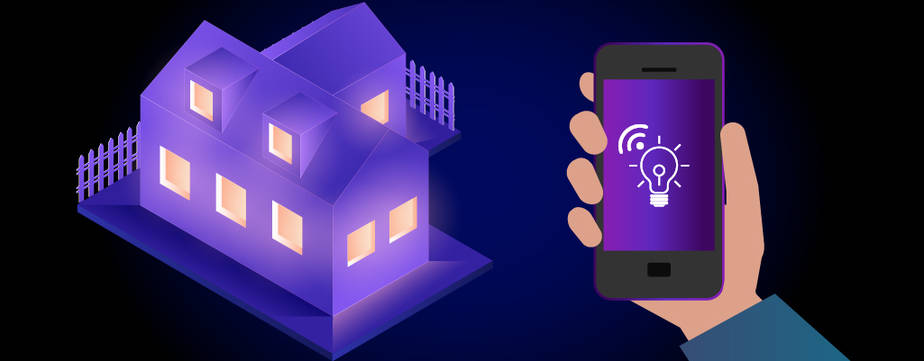
Welcome to the world of smart lighting, where your lights do more than just illuminate your space. Smart lighting is an integral part of home automation, allowing you to control and customize your lighting to suit your mood, schedule, and energy needs.
Types of Smart Lighting
- Smart Bulbs: These are LED bulbs that can be controlled wirelessly, often with color-changing capabilities.
- Smart Switches: These replace your traditional light switches and offer remote control and scheduling features.
- Smart Systems: These encompass a range of lighting products, from bulbs to switches, that work together seamlessly.
Energy Efficiency
Smart lighting isn’t just about convenience and style; it’s also about energy efficiency. By using features like motion sensors, dimming, and scheduling, you can reduce energy consumption and lower your electricity bills.
Control and Customization
The fun part of smart lighting is the control and customization it offers. You can control your lights through smartphone apps, voice assistants like Amazon Alexa or Google Assistant, or even set up automated schedules.
Want a cozy, warm light in the evening and a bright, energizing one in the morning? It’s all just a tap or voice command away.
Why Should You Care About Smart Lighting?
- Convenience: Turn off all the lights in your home with a single command before bed.
- Security: Set up lighting schedules to make it seem like you’re home even when you’re not.
- Mood and Ambience: Customize the color and brightness of your lights to match your activities or moods.
- Energy Savings: Avoid leaving lights on when you’re not using them, thanks to motion sensors and scheduling.
- Affordability: Smart light bulbs are available for the most modest budgets, so you don’t have to worry about busting your bank account for a smart home.
Smart lighting is an excellent starting point for building your smart home. It’s affordable, easy to install, and offers immediate benefits in terms of convenience, energy efficiency, and personalization.
3. Smart Energy Devices
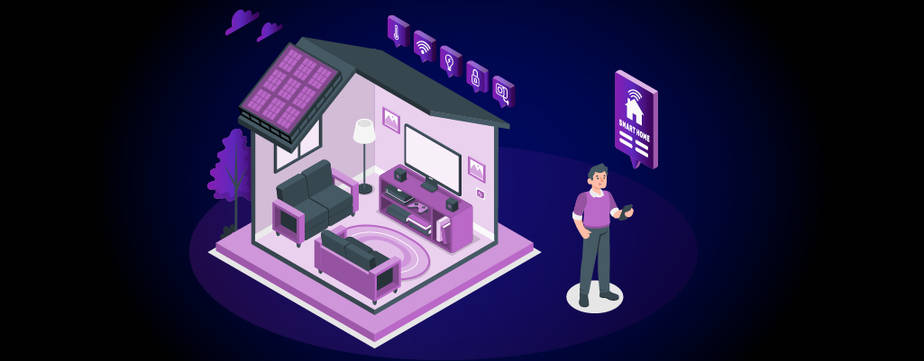
Smart homes aren’t just about convenience and security; they can also help you be more energy-efficient. By integrating smart energy management, you can optimize your home’s heating, cooling, and overall energy usage. The benefits? Lower utility bills, reduced carbon footprint, and a cozy home that’s just right for you.
Let’s explore how to make your home a smart energy powerhouse:
- Smart Thermostats: These nifty devices learn your temperature preferences and adjust accordingly. Imagine waking up to a warm house in winter or coming home to a cool oasis in summer. Not only do they enhance comfort, but smart thermostats also save you up to 10% on heating and cooling costs.
- Energy Monitoring: From smart plugs to whole-house energy monitors, these devices and apps give you real-time insights into your energy usage. You can identify energy guzzlers, set usage goals, and even get alerts for abnormal consumption. It’s like having a personal energy coach.
- Integration is Key: Smart energy systems can seamlessly integrate with other home automation devices. For example, your smart thermostat can work in tandem with your smart blinds, optimizing natural light and reducing heating or cooling needs.
- Maximize Savings, Minimize Footprint: Here are some actionable tips to supercharge your energy efficiency:
- Leverage natural light: Use smart blinds or curtains to let in sunlight during the day.
- Optimize temperature zones: Use smart thermostats to heat or cool only the rooms you’re using.
- Schedule energy-intensive tasks: Run your dishwasher or laundry during off-peak hours to save on electricity costs.
- Explore renewable energy: Consider solar panels or wind turbines to generate your own clean energy.
Smart energy management is a win-win: you save money while being kinder to the planet. So, why not embark on this smart energy journey and make your home an energy-savvy haven?
4. Smart Appliances

Smart appliances are the superheroes of your kitchen and laundry room, offering a range of benefits that go beyond the ordinary. They’re designed to make your life easier, more efficient, and even more fun.
Here’s what you should consider integrating and why into your smart home setup:
- Types of Appliances: From refrigerators that can create shopping lists to ovens that can be preheated remotely, smart appliances come in various forms. Some examples include:
- Refrigerators: They can monitor and adjust temperature, track food inventory, and even suggest recipes based on what’s inside.
- Ovens: These can be controlled from your phone, offer pre-programmed cooking modes, and send you notifications when your meal is ready.
- Washing Machines: They can be scheduled to run during off-peak energy hours, send you alerts when the cycle is complete, and even automatically order detergent when you’re running low.
- Connectivity: These appliances connect to your home’s Wi-Fi network, allowing you to control and monitor them from anywhere using your smartphone or built-in voice assistants like Amazon Alexa or Google Assistant.
- Maintenance and Efficiency: Smart appliances offer features that make maintenance a breeze. For example, your fridge might notify you when it’s time to change the water filter, or your washing machine might suggest the optimal detergent dosage for each load. They can also help you save on utility bills by running more efficiently.
- Choosing Smart Appliances: Consider your lifestyle and needs when selecting these appliances. If you love cooking, an oven with recipe suggestions might be a game-changer. If you’re often on the go, a washing machine that sends cycle notifications could be a great fit.
Integrating smart appliances into your home not only makes your daily routines more seamless but also adds a touch of futuristic charm. So, why not let your appliances do the heavy lifting while you sit back and enjoy the convenience and efficiency they bring to your home?
Assessing Your Home’s Readiness for Automation
Is your home ready to be automated? Before you dive into the world of smart devices and interconnected systems, it’s crucial to evaluate your home’s infrastructure and connectivity.
In this section, we’ll explore the essential factors to consider when assessing your home’s readiness for automation. It’s something I wasn’t thinking at all about because I just thought any old home can be updated with smart home compatible devices, but it just wasn’t the case.
1. Evaluating Your Network Infrastructure
With smart homes, your Wi-Fi is the backbone that connects all your devices and makes them dance to your tune. So, let’s talk about the nitty-gritty of your network infrastructure and why it’s crucial to get it right.
Why Wi-Fi and Network Matter
Your smart devices rely on a fast and stable internet connection to deliver their full potential. From streaming security camera footage to controlling your lights remotely, a reliable network is non-negotiable.
Upgrade your internet at home if you need to. You don’t want your smart home to be as responsive as a dial-up connection from the ’90s.
Optimizing Wi-Fi Coverage and Stability
Now, let’s dive into some actionable tips to optimize your Wi-Fi coverage and stability:
- Find the Right Spot for Your Router – Place your router in a central location, away from obstructions and interference. It’s key to maximizing Wi-Fi coverage.
- Upgrade Your Router – If your current router is struggling to keep up with your smart home demands, consider upgrading to a more powerful and modern model. The difference is like going from a bicycle to a rocket ship.
- Mesh Wi-Fi Systems – For larger homes or areas with Wi-Fi dead zones, a mesh Wi-Fi system can be a lifesaver. These systems use multiple access points to create a seamless and robust network.
- Wi-Fi Extenders and Powerline Adapters – If you have a few areas with weak Wi-Fi signals, Wi-Fi extenders or powerline adapters can help extend coverage to those spots.
- Secure Your Network – Don’t forget the basics! Secure your Wi-Fi network with a strong password and enable network encryption like WPA2.
Remember, your smart home is only as smart as its connection. By evaluating and optimizing your network infrastructure, you’re laying a solid foundation for a seamless and responsive smart home experience.
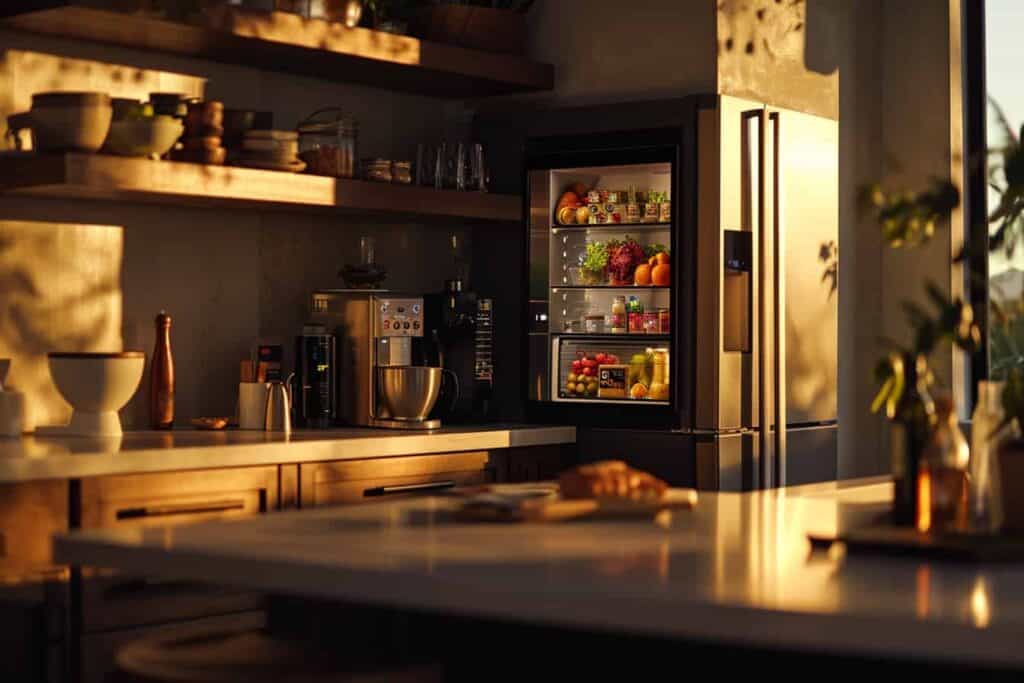
2. Compatibility and Interoperability Considerations
Ensuring communication protocol compatibility and interoperability between your devices lays a strong foundation for your smart home. It opens up a world of possibilities, allowing you to create personalized automations and routines that truly elevate your home’s intelligence.
- Don’t ditch, integrate! Before you embark on your smart home journey, it’s wise to evaluate the compatibility of your existing devices. You’d be surprised at how many can seamlessly integrate with smart home systems.
- One standard to rule them all. Common standards like Zigbee and Z-Wave are your best friends when it comes to interoperability. Opting for devices that adhere to these standards ensures they can communicate with each other effortlessly, regardless of the brand or manufacturer.
- Why does it matter? Imagine this: your smart thermostat adjusting the temperature based on your smart door lock’s status. Or your smart lights turning on when your security camera detects motion. These scenarios are only possible when your devices can talk to each other, and that’s where compatibility and common standards come into play.
- The Zigbee and Z-Wave difference. Zigbee and Z-Wave are two of the most widely adopted wireless communication protocols in the smart home realm. While both serve the purpose of enabling device interoperability, they have some nuanced differences. Zigbee operates on a mesh network, allowing for greater range and scalability, while Z-Wave offers more robust security features.
- Check for the logos. When purchasing new devices, keep an eye out for the Zigbee or Z-Wave logo. These indicate that the device is designed to work within those respective ecosystems, giving you peace of mind when it comes to compatibility.
- The power of a smart hub. If you have a mix of devices that don’t directly communicate with each other, a smart hub can act as a bridge, allowing them to interact seamlessly. Smart hubs often support multiple communication protocols, making them a versatile solution for device compatibility.
So, before you go on a shopping spree, take a moment to evaluate what you already have and how it can fit into your smart home ecosystem.
3. Budgeting and Prioritizing
The idea of building a smart home can be thrilling, but before you get carried away with all the possibilities, it’s essential to set a realistic budget. By determining your financial boundaries from the start, you can make well-informed choices and avoid any unpleasant surprises down the line.
Here’s how you can budget and prioritize your smart home project:
- Assess Your Home’s Automation Potential
- Take a walk around your home and identify the areas where automation would be most beneficial. For example, do you want to focus on security, energy efficiency, or convenience? Prioritizing these areas will help you allocate your budget more effectively.
- Start with the Basics
- When you’re on a tight budget, it’s best to begin with the essentials and gradually expand. Start with devices that offer the most immediate benefits, such as smart locks, thermostats, or security cameras. These foundational elements not only enhance your home’s functionality but also increase its value.
- Consider Long-Term Savings
- While some smart home devices may seem like a splurge at first, they can actually save you money in the long run. For instance, a smart thermostat can optimize your energy usage, resulting in lower utility bills. By factoring in these potential savings, you can justify investing a bit more in certain areas.
- Research and Compare Prices
- Before making any purchases, do your assignments. Compare prices, read customer reviews, and check for any ongoing promotions or discounts. This extra effort can help you stretch your budget without compromising on quality.
- Leave Room for Scalability
- Your smart home journey doesn’t have to end once you’ve set up the basics. Plan for future expansions and leave room in your budget for additional devices or upgrades. This way, you can gradually build on your smart home infrastructure over time.
Remember, building a smart home is a journey, not a race. By setting a realistic budget and prioritizing your needs, you can create a home that’s not only technologically advanced but also tailored to your lifestyle and financial capacity.
Planning and Designing Your Smart Home System

Planning and designing your smart home system is the crucial first step toward creating a seamless and efficient living space. By taking the time to strategize and consider your needs, you can lay the foundation for a home that not only enhances your lifestyle but also prioritizes your safety and security.
1. Creating a Floor Plan and Device Placement Strategy
Now that you’re ready to embark on your smart home journey, let’s start with a solid foundation: your floor plan. By mapping out your home’s layout and identifying ideal device locations, you’ll save yourself from the hassle of trial and error later on.
Why Does This Matter?
- Efficiency: A well-thought-out placement strategy ensures devices communicate seamlessly.
- Aesthetics: By considering your home’s design, you can integrate devices more seamlessly.
- Signal Strength: Avoid dead zones by placing devices within optimal signal range.
- Practicality: Account for power outlets and wiring needs to avoid any surprises.
How to Get Started
- Grab a pen and paper (or use a digital floor plan tool) to sketch out your home’s layout.
- Note the location of power outlets, ethernet ports, and existing devices like routers.
- Identify areas where you’d like to incorporate smart devices, such as security cameras, smart speakers, or smart lighting.
Tips for Device Placement
- Wi-Fi Signal: Place your router in a central location, away from obstructions like walls and metal objects.
- Smart Speakers: Position them in high-traffic areas for optimal voice command recognition.
- Smart Lighting: Install switches near entryways or in rooms where manual control is essential.
- Security Devices: Position cameras at entry points and in areas with valuable assets.
- Smart Thermostats: Place them in a central location, away from direct sunlight or drafts.
My Experience
When I first started setting up my smart home, I didn’t pay much attention to device placement. As a result, I had to deal with Wi-Fi dead zones and voice commands that often fell on deaf ears. After a bit of rearranging and following these placement tips, my smart home now runs like a well-oiled machine.
Remember, a little planning goes a long way in creating a smart home that not only enhances your lifestyle but also looks and feels just right. So, grab that floor plan and let’s get strategic with your device placements!
2. Security and Privacy Considerations
As you embark on your smart home journey, it’s crucial to consider the security and privacy implications that come with this level of connectivity. Here are some tips to help you safeguard your data and devices from cyber threats:
- Secure Your Wi-Fi Network:
- Change your default router password to a strong, unique one.
- Enable WPA2 or WPA3 encryption for your Wi-Fi network.
- Regularly update your router’s firmware to ensure you have the latest security patches.
- Choose Trusted Devices and Brands:
- Stick to reputable brands and vendors known for their robust security measures.
- Research and read reviews before purchasing any smart home device.
- Avoid buying used devices, as they may have compromised security.
- Strengthen Device Security:
- Change default usernames and passwords on all your smart devices.
- Enable two-factor authentication whenever possible.
- Keep devices up to date with the latest firmware and security patches.
- Protect Your Data:
- Use strong, unique passwords for all your smart home accounts.
- Regularly back up your smart home data to a secure cloud or local storage.
- Consider using a virtual private network (VPN) for an added layer of encryption.
- Be Mindful of Sharing Data:
- Review and understand the privacy policies of the smart home devices and apps you use.
- Limit the amount of personal information you share with your smart home ecosystem.
- Regularly audit and revoke unnecessary app permissions.
By taking these security and privacy considerations to heart, you can enjoy the convenience and comfort of a smart home without compromising your personal data or home’s safety.
3. Scalability and Future-Proofing
When you embark on your smart home journey, it’s important to think beyond your current needs and consider how your system can grow with you. Scalability and future-proofing are key to ensuring that your investment in smart home technology remains relevant and valuable for years to come.
Why is scalability important?
- As your needs change and new technologies emerge, you’ll want your smart home to adapt and keep up.
- Scalability allows you to add new devices, expand your system’s capabilities, and integrate with emerging technologies seamlessly.
How to Design a Scalable Smart Home:
- Choose an Open and Interoperable Platform: Opt for a smart home ecosystem that isn’t limited to a single brand or protocol. This flexibility ensures that you can easily add new devices from different manufacturers in the future.
- Invest in Devices with Upgrade Paths: Look for devices that offer firmware updates and are compatible with evolving standards like Zigbee or Z-Wave. This way, you can enjoy new features without having to replace entire devices.
- Plan for Expansion: Consider your future needs and plan your smart home layout accordingly. Installing additional wiring or infrastructure during the initial setup can save you time and effort down the line.
- Leverage the Power of the Cloud: Cloud-based platforms offer the advantage of remote updates and management. This means your smart home can benefit from new features and improvements as they become available.
- Embrace Voice Control and AI: Voice assistants and artificial intelligence are constantly evolving. By choosing devices that integrate with popular voice platforms like Amazon Alexa or Google Assistant, you’re future-proofing your home against the next wave of smart home innovations.
The beauty of a smart home is its ability to adapt and grow alongside your changing needs. By keeping scalability and future-proofing in mind during the design and device selection process, you’re setting the foundation for a smart home that’s ready for whatever the future holds.
Getting Started: First Steps in Building Your Smart Home
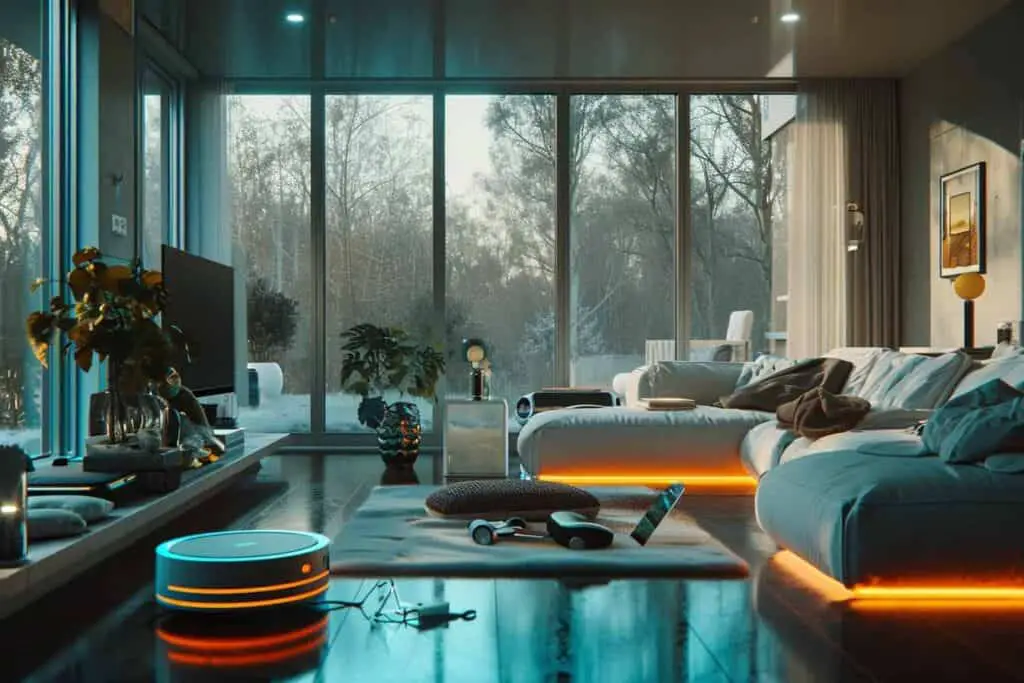
Now, let’s dive into the initial steps that will set you on the path to a seamlessly connected and intelligent living space.
1. Main Considerations Building Your Smart Home
If you’re new to the world of smart homes, fret not. There’s a whole range of easy-to-install and affordable devices designed specifically for beginners like you. Let’s take a quick look at some entry-level projects and key devices to get you started on your smart home journey.
Entry-Level Projects
- Smart Lighting: Replace your traditional bulbs with smart ones that you can control with your voice or a smartphone app.
- Voice-Controlled Assistant: Bring home a smart speaker like the Amazon Echo or Google Home to control your devices with simple voice commands.
Key Devices to Consider
- Smart Speakers: These are the hub of your smart home, allowing you to control various devices using voice commands.
- Thermostats: Smart thermostats like the Nest or Ecobee help you save energy by learning your preferences and adjusting the temperature accordingly.
- Security Systems: From smart locks to video doorbells, there are plenty of options to secure your home and monitor it remotely.
- Robot Vacuums: Robot vacuums automate floor cleaning with features like scheduling and remote app control, fitting into the smart home ecosystem for convenience.
Integration and Communication
The beauty of a smart home lies in how its devices seamlessly communicate and integrate with each other. Most devices use Wi-Fi, Bluetooth, or protocols like Zigbee and Z-Wave to connect. This means your smart speaker can not only control your lights but also interact with your security system or thermostat.
My Personal Experience
When I started building my smart home, I began with a few smart bulbs, a Roomba robot vacuum, and a voice-controlled assistant. It was incredible to be able to turn off the lights or play music with just a voice command.
Over time, I added more devices like a smart lock and security cameras, all of which integrated effortlessly with my existing setup.
Don’t be overwhelmed by the vast array of smart home devices available. Start small, with projects like smart lighting or Amazon Echo Show, and gradually expand based on your needs.
The key is to choose devices that work well together and can be easily integrated into your home. Before you know it, you’ll have a fully functional and interconnected smart home.
2. Choosing a Smart Home Ecosystem
When it comes to smart home ecosystems, you’ve got options. Some of the most popular ones are Amazon Alexa, Google Assistant, and Apple HomeKit. Each of these platforms has its own perks and quirks, so finding the right fit for you is key.
Here’s a quick rundown of what each ecosystem brings to the table:
- Amazon Alexa: Alexa is known for its extensive device compatibility and robust third-party integrations. If you’re all about voice control and want a wide range of smart devices to choose from, Alexa might be your go-to.
- Google Assistant: Google Assistant is a strong contender, especially if you’re already in the Google ecosystem with products like Android phones or Chromecast. It’s great at understanding context and offers a seamless experience across devices.
- Apple HomeKit: If you’re an Apple aficionado, HomeKit might be the way to go. It offers tight integration with your Apple devices, emphasizing privacy and security. Just keep in mind that device compatibility can be more limited compared to other ecosystems.
Now, how do you choose the right smart home ecosystem for your smart home? Here are a few factors to consider:
- Device Compatibility: Ensure that the smart devices you already own or plan to buy are compatible with your chosen ecosystem. There’s no use in having a fancy voice assistant if it can’t control your lights or lock your doors.
- Personal Preferences: Think about the devices and services you already use. Are you heavily invested in the Apple or Google ecosystem? Do you primarily use voice commands or prefer app-based control? Your existing preferences can help guide your decision.
- Future Expansion: Consider how scalable the ecosystem is. Are you planning to add more smart devices in the future? Make sure the ecosystem you choose can accommodate your long-term goals.
Remember, there’s no one-size-fits-all solution here. It eventually boils down to what you value most in a smart home experience. So take the time to explore and test out different ecosystems before committing to one. After all, your smart home should be as unique as you are.
3. Setting Up Your Smart Hub or Controller
Now that you’ve got a taste of the smart home life, it’s time to bring it all together with a central hub or controller. This is the brain of your smart home, the command center that orchestrates all your devices.
Here’s a step-by-step guide to get you started:
- Choose the Right Hub: There are several options out there, from voice-activated hubs like Amazon Echo to more traditional ones like Samsung SmartThings. Consider your preferences and the devices you already own to make the best choice.
- Install and Connect: Once you’ve got your hub, follow the manufacturer’s instructions to set it up. This usually involves connecting it to your Wi-Fi network and creating an account.
- Pair Your Devices: Now comes the fun part—pairing your devices with the hub. Most hubs have a simple pairing process, either through a mobile app or by pressing a button on the device. Start with a few devices, like smart bulbs or plugs, to get the hang of it.
- Create Automation Routines: The real magic of a smart home lies in automation. Use your hub’s app to create routines that trigger actions based on certain events. For example, you can set your lights to turn on when you enter a room or have your coffee maker start brewing when your alarm goes off.
- Test and Troubleshoot: Before you call it a day, make sure to test your automation routines and devices. Sometimes, a simple reboot or re-pairing can fix any hiccups.
My first experience setting up a hub was a game-changer. I could control my lights, thermostat, and even my robot vacuum from a single app. It’s like having a personal assistant at your fingertips.
A central hub is the backbone of your smart home, so take your time to choose the right one. And don’t worry if you’re not a tech whiz; most hubs are designed to be user-friendly. Just keep in mind some of the things like wireless protocol compatibility mentioned earlier and you’ll be fine.
The Future of Smart Homes: Trends and Innovations
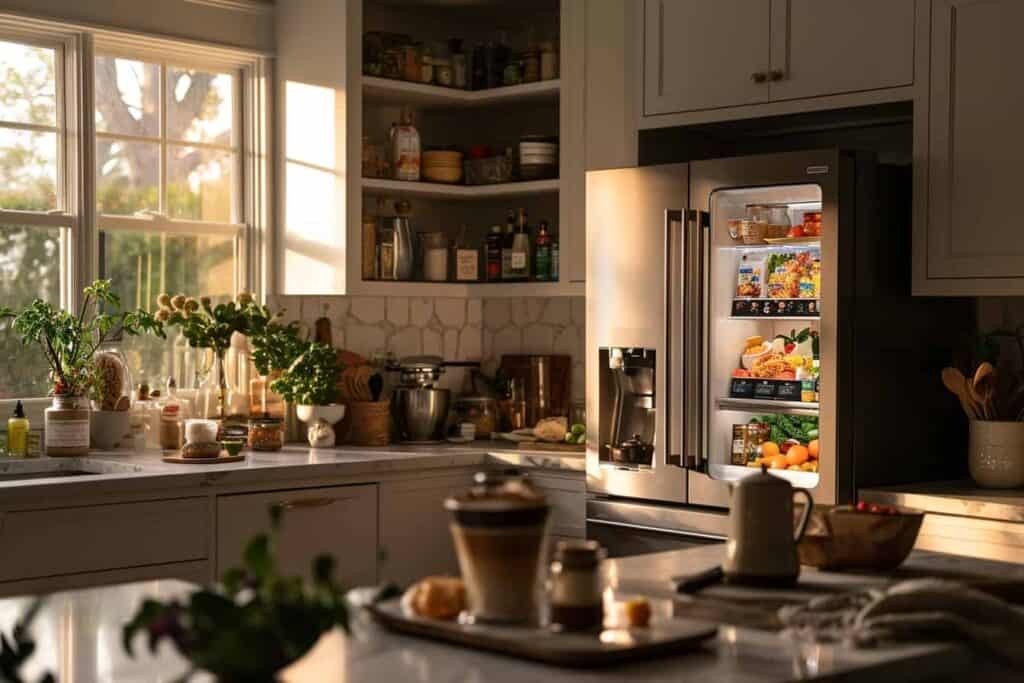
As technology continues to advance at a rapid pace, the world of smart homes is not one to be left behind. From voice-controlled virtual assistants to AI-powered security systems, the future of smart homes is a fascinating blend of convenience, efficiency, and personalization.
Let’s take a closer look at some of the exciting trends and innovations that are shaping the homes of tomorrow.
Voice and Gesture Control Advancements
We’re seeing some exciting advancements in how we interact with our smart homes. One area where this is particularly evident is with voice and gesture control.
Using natural language processing, our smart devices can now understand and respond to more nuanced commands.
For instance, instead of saying, “Turn off the lights in the living room,” you can simply say, “Living room lights off.” It’s a small change, but it makes a big difference in terms of convenience and ease of use.
But it doesn’t stop there. Gesture recognition takes things a step further by allowing you to control your devices with a wave of your hand or a simple gesture.
Imagine walking into a room and raising your hand to adjust the temperature or swiping your finger to change the channel on your TV. It’s like something out of a sci-fi movie, but it’s very much a reality now.
These advancements in voice and gesture control are not just gimmicks; they’re actually making our smart homes more intuitive and user-friendly.
Here are a few tips on how to leverage these technologies in your own home:
- Invest in devices that support natural language processing and gesture recognition. Look for features like “wake word” detection, which allows you to activate your devices with a simple voice command.
- Take the time to set up and calibrate your gesture controls properly. This will ensure that your devices respond accurately to your movements.
- Don’t be afraid to experiment and try out new commands and gestures. The more you use these features, the more comfortable and seamless they’ll become.
Incorporating voice and gesture control into your smart home setup can elevate your user experience to a whole new level. So why not give it a try? The future of smart home interactions is here, and it’s as easy as saying, “Lights on.”
Integration with Smart Cities and IoT
As we journey into the future, the concept of a smart home is expanding beyond the four walls of our living spaces. Imagine a world where your smart home seamlessly connects with the broader city infrastructure, creating a fully connected ecosystem.
The integration of smart homes with the Internet of Things (IoT) has the potential to revolutionize how we interact with our cities. By leveraging the power of interconnected devices, we can contribute to a more sustainable and efficient city infrastructure. Here’s how:
- Energy Optimization: Your smart home can communicate with the city’s energy grid, allowing for dynamic load balancing and reducing strain during peak hours. This not only lowers your energy bills but also contributes to a greener, more sustainable city.
- Traffic Management: Through IoT sensors, your smart home can receive real-time traffic updates and suggest the best routes for your daily commute. On a larger scale, this data can help city planners optimize traffic flow, reducing congestion and emissions.
- Waste Management: Smart bins that notify waste collection services when they’re full, reducing unnecessary trips and optimizing collection routes. This not only saves time and resources but also helps keep our cities cleaner.
- Public Safety: Your smart home’s security system can connect with local law enforcement, providing real-time updates and increasing response times. This integration enhances community safety and helps law enforcement agencies better allocate their resources.
By embracing the concept of a connected smart home, you’re not only enhancing your own lifestyle but also contributing to the betterment of your city. As more homes adopt smart technologies, the potential for a fully integrated, sustainable, and efficient cityscape becomes increasingly tangible.
Privacy and Ethical Considerations in a Smart Home
When we talk about smart homes, it’s not just about convenience and automation; it’s also about privacy and ethics. As you introduce more connected devices into your home, it’s essential to be mindful of the data they collect and how it’s used.
Here are some tips to help you maintain a secure and private smart home environment:
- Understand User Consent: Before you connect any device to your smart home ecosystem, take the time to read the privacy policy and terms of service. Ensure that you’re comfortable with the data collection and usage practices outlined.
- Secure Your Network: Your smart home is only as secure as your Wi-Fi network. Use a strong, unique password for your network and enable WPA2 or WPA3 encryption. Regularly update your router’s firmware to patch any security vulnerabilities.
- Keep Software Up to Date: Regularly update the firmware and software of your smart devices. Manufacturers often release updates to address security flaws, so don’t ignore those notifications.
- Use Strong, Unique Passwords: Avoid using default or easily guessable passwords for your smart devices. Instead, use a password manager to generate and store strong, unique passwords.
- Review Device Permissions: Periodically review the permissions granted to each smart device. Some may request access to more data than they need. Be cautious and revoke unnecessary permissions.
- Segment Your Network: Consider creating separate network segments for your smart devices and your personal devices. This way, even if one device is compromised, it won’t have access to your personal data.
By being proactive and following these tips, you can enjoy the benefits of smart technology while maintaining your privacy and ethical standards.
8 Creative Smart Home Ideas
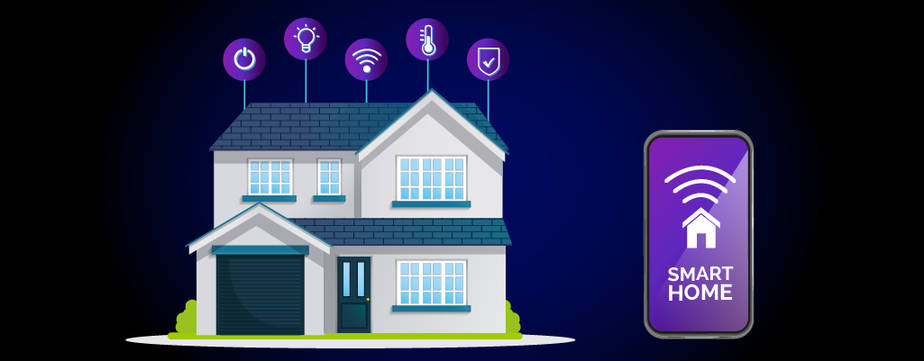
Looking to add a touch of uniqueness to your smart home? These creative ideas will help you take your home automation to the next level. From personalized voice commands to integrating smart devices with your home decor, these tips will add a dash of personality and innovation to your living space. So, let’s get those creative gears turning!
1. Blink the Lights When Your Uber Arrives
You’re waiting for your Uber, and instead of constantly checking your phone, your smart home alerts you with a gentle light show. This isn’t a far-fetched scenario; it’s a simple automation you can set up to elevate your smart home experience.
How does it work? By integrating your Uber account with your smart lighting system, you can program your lights to blink in a designated color when your ride arrives.
Here’s how to make it happen:
- Choose your smart lighting system: Whether it’s Philips Hue, LIFX, or another brand, ensure your lights are compatible with automation platforms like IFTTT or SmartThings.
- Connect your Uber account: Link your Uber account to the automation platform you’re using. This usually involves authorizing the platform to access your Uber data.
- Set up the automation: Create a new automation or applet that triggers your lights to blink when your Uber is nearby. You can customize the color, duration, and intensity of the light show.
- Test it out: Request an Uber and see if your lights respond accordingly. Tweak the settings if needed.
Why is this useful? Apart from the novelty factor, blinking lights can be especially handy if you have family members or guests who need to know when their ride has arrived. It’s a small but impactful way to seamlessly integrate your smart home with your daily routines.
Remember, this is just one example of the creative automations you can implement in your smart home. The key is to think beyond the basics and tailor your devices to fit your lifestyle.
2. Schedule Your Holiday Lights
What better way to embrace the holiday spirit than by automating your holiday lights? Imagine coming home to a beautifully lit house without having to lift a finger.
Here’s how you can schedule your holiday lights in a few simple steps:
- Choose the right smart bulbs: Opt for smart bulbs that offer color-changing options, like the Philips Hue or LIFX. These bulbs can be controlled remotely and offer a wide range of colors to match your holiday theme.
- Set up a lighting scene: Create a lighting scene in your smart home app that captures the essence of the holidays. For example, you can set the lights to a warm red and green combination or a cool blue and white for a winter wonderland feel.
- Automate with a smart plug or hub: Connect your holiday lights to a smart plug or hub. This allows you to schedule when the lights turn on and off, whether it’s at sunset or during specific hours.
- Add some magic with animations: Some smart lighting systems offer pre-programmed animations, like twinkling or color fades. Incorporate these into your lighting scene to give your home an extra touch of holiday magic.
- Integrate with your voice assistant: Link your smart lighting system to your voice assistant, be it Amazon Alexa or Google Assistant. This way, you can simply say, “Hey Google, turn on the holiday lights,” and watch the magic happen.
By scheduling your holiday lights, you not only save time but also create a warm and welcoming ambiance for your guests and loved ones. So, this holiday season, let technology take care of the lighting while you focus on creating beautiful memories.
3. Find Out When the Mail is Delivered
Curious to know when your mail arrives? With a few smart tweaks, you can turn your home into a personal mail notifier.
Here’s how:
- Smart Doorbells: Equip your door with a smart doorbell, like the Ring Video Doorbell. It not only lets you see and talk to visitors remotely but can also alert you when the mail carrier drops off a package.
- Mailbox Sensors: Install a mailbox sensor, such as the Samsung SmartThings Multipurpose Sensor, inside your mailbox. It will send you a notification the moment the mailbox is opened, giving you real-time updates on your mail delivery.
- Smart Locks: Integrate a smart lock, like the August Wi-Fi Smart Lock, with your delivery preferences. Many delivery services now offer one-time access codes for secure drop-offs. You can grant temporary access to the delivery person, ensuring your packages are safely stowed away.
- Voice Assistants: Connect your smart home devices to voice assistants like Amazon Alexa or Google Assistant. You can ask, “Hey Google, did I get any mail today?” and get an instant reply.
Why is this useful? Imagine being able to retrieve important mail or packages as soon as they’re delivered, preventing any potential porch thefts or delays in receiving time-sensitive documents.
By leveraging these smart home technologies, you can stay one step ahead of your mail carrier and make sure nothing important slips through the cracks.
4. Soak Your Lawn if a House Fire is Happening
In the unfortunate event of a house fire, every second counts. That’s why it’s crucial to have a multi-layered home safety plan. One often overlooked aspect is your lawn. Believe it or not, a well-watered lawn can act as a natural firebreak and slow down the spread of flames.
Here’s how you can incorporate this smart safety measure into your home:
- Install smart sprinklers: These nifty devices can be programmed to water your lawn at specific times. In an emergency, you can activate them remotely to create a wet barrier around your home.
- Integrate with your smart home hub: By connecting your smart sprinklers to your home security system, you can set them to activate automatically when a fire alarm is triggered.
- Regular lawn maintenance: Keep your lawn healthy and well-watered, especially during dry seasons. This not only enhances its fire-resistant properties but also adds to your home’s curb appeal.
Remember, this isn’t a foolproof solution, but it can buy you valuable time in case of a fire. So, next time you’re tending to your garden, think beyond aesthetics and consider it an additional layer of home safety.
5. Create Home Cinema Lighting
Setting up the perfect ambiance for your home cinema is a game-changer. Not only does it enhance your viewing experience, but it also adds a touch of magic to your movie nights. Let’s dive into some tips on how to create the ultimate home cinema lighting setup.
- Dimmers are your best friends: Install dimmer switches to control the intensity of your lights. When the movie begins, gradually lower the lights to match the on-screen action.
- LED Strips for that cinematic glow: Place LED light strips behind your TV or along the perimeter of the room. These strips can mimic the colors on your screen, making the whole experience more immersive.
- Smart Bulbs for easy control: Connect your lights to a smart home hub, and you can control them with a voice command or a tap on your smartphone. Imagine saying, “Movie time,” and your lights dimming automatically.
- Scenes for different moods: Set up predefined lighting scenes for different movie genres. For an action flick, you might want brighter lights, while a horror movie calls for darker, more mysterious lighting.
- Don’t forget about safety: While dim lighting is great for atmosphere, make sure you have some low-level lighting in walkways and stairs to prevent accidents when you need to step out.
Creating the right lighting for your home cinema is like adding the cherry on top of a sundae. It’s the little detail that elevates the entire experience. So, go ahead and experiment with different lighting setups to find what works best for you. Grab some popcorn, and let the movie magic unfold in your perfectly lit home cinema.
6. Pet Monitoring When You’re Away From Home
As a pet parent, leaving your furry friend behind can tug at your heartstrings. But with the right smart home setup, you can keep a watchful eye on your pet, even when you’re miles away. Here’s how to set up a pet monitoring system that gives you peace of mind:
- Smart Cameras: Place cameras in key areas of your home, like the living room or by the pet’s bed. You can access the live feed from your smartphone or computer, so you’re always in the loop.
- Two-Way Audio: Some cameras come with built-in speakers, allowing you to talk to your pet and even hear their response. It’s a great way to comfort them or redirect any mischief.
- Activity Monitors: Attach a smart collar or tag to your pet to track their activity levels, sleep patterns, and even receive health alerts. It’s like having a Fitbit for your pet!
- Treat Dispensers: For a little extra love, invest in a treat dispenser that you can activate remotely. It’s a fun way to reward good behavior or just say hello.
- Smart Pet Doors: Give your pet the freedom to go in and out with a smart pet door. You can control access from your phone and even receive notifications when your pet comes and goes.
I remember setting up a camera in my living room and being amazed at how my dog would play with his toys even when I wasn’t around. It’s a small but impactful way to stay connected with your pet, even during a busy day.
7. Make Announcements to Other Rooms
Ever wished you had a personal butler to relay messages or make announcements throughout your home? Well, with a smart home setup, you can get pretty close! Imagine being able to say, “Dinner’s ready!” and have your voice echoed in every room.
How It Works
Using voice assistants like Amazon Echo or Google Home, you can easily broadcast messages to different rooms or specific zones in your home. It’s as simple as saying, “Hey Google, broadcast ‘Time to wake up!'” and your message will be played on all your Google Home devices.
Why It’s Useful
- Convenient: No more shouting across the house or running up and down the stairs to get everyone’s attention.
- Security: In case of an emergency, you can quickly alert everyone in the house.
- Fun and Quirky: You can even use it to play pranks or create a unique ambiance during parties.
Tips for Effective Announcements
- Keep it Clear and Concise: Avoid long-winded messages that might get lost in translation.
- Customize by Room: Use the broadcast feature to send specific messages to different areas of your home.
- Use Gentle Tones: Some voice assistants offer “whisper mode,” perfect for those late-night messages.
I remember the first time I used this feature to call my family for dinner. The surprise and excitement on their faces were priceless. Broadcasting messages is not only practical but also adds a touch of elegance to your smart home experience. So go ahead, give it a try, and let your voice travel from room to room.
8. Privacy and Security In Your Smart Home
Now that you’re on your way to a smart home, let’s address a crucial aspect: privacy and security. As your home gets more connected, it’s essential to ensure your personal data and property stay protected. Here are some actionable tips to safeguard your smart haven:
- Strengthen Your Network Security
- Set a strong, unique password for your Wi-Fi network.
- Enable network encryption like WPA2 or WPA3.
- Regularly update your router’s firmware for security patches.
- Secure Your Smart Devices
- Change default usernames and passwords on all devices.
- Keep devices updated with the latest firmware.
- Disable unnecessary features like remote access if you don’t need them.
- Prioritize Data Privacy
- Understand what data your devices collect and how it’s used.
- Opt for devices that offer local storage or end-to-end encryption.
- Review and adjust privacy settings in device apps or web portals.
- Employ Additional Security Measures
- Install a reliable antivirus and firewall on your home network.
- Use a separate, dedicated network for smart devices if possible.
- Consider adding security cameras or smart locks for added protection.
Remember, your smart home is only as secure as its weakest link. By implementing these measures, you can enjoy the convenience and comfort of a smart home without compromising your privacy or security.
Building a Smart Home Final Thoughts
As we’ve explored, the essence of a smart home lies in its ability to integrate and automate, making everyday tasks simpler and saving you precious time. With the power of voice commands, mobile apps, and central hubs, you’re equipped to orchestrate a living space that responds to your needs and adapts to your lifestyle.
As you consider the path ahead, remember that your smart home can evolve with you, starting with foundational devices like smart locks, lighting, thermostats, and appliances.
These technologies not only offer immediate benefits but also pave the way for a future where your home is a dynamic, energy-conscious, and secure haven.
Embrace the possibilities and let your home become a reflection of your aspirations for a life that’s more connected, intuitive, and attuned to your personal rhythm.